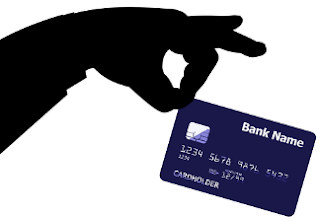Something is very fishy... I have a strong suspicion that we are double taxed on our ROTH IRA contributions.
We are using the "back door IRA" by contributing to the traditional IRA and immediately transferring the contributed amount to the ROTH IRA.
We have two traditional IRA accounts for this purpose. However, my account has $0 in it. My husband's account has about $25,000. That was transferred there from the pervious employer's 401k after he changes jobs.
This year I noticed that $5,062 of the AFTER TAX contributed $7,000 to the back door ROTH IRA were taxed again.
I went back and saw that similar amount was taxed in the previous years since the 401k money was placed into the traditional IRA.
The main point at which the double taxation happens is this:
Yearly contribution is placed and the pro-rated amount is taxed.
However, the prorated amount for the following year still contains the amount contributed in the previous year.
It is never removed from the calculations and it is counted every following year again and again.
The below calculation is not for the faint of heart. I tried to explain my findings to the 401k advisor, but he insisted that there is no double taxation. But I am still convinced that the double (and possible even triple) taxation happens.
This year: 2024
Traditional IRA $25,279
Back door ROTH contribution $7,000
Taxed was $5,062 of the $7,000.
The $7,000 went immediately to the ROTH. The amount in the traditional IRA stays the same at $25,279 and will be the same at the next years calculations. The taxed $5,062 are still inside the traditional IRA.
It is difficult to explain. In other words,
That means that next year:
At least the same amount will be used in the pro-rata calculation and will be taxed again. And when traditional IRA grows bigger, the non taxed amount will be smaller.
Since the taxed money is not taken out of the traditional IRA, the same $25279 will be considered as "contributed before taxes", when it should be only $25279-$5062=$20217.
But the next year the calculation will be done with the same $25279 or with larger amount if it grew.
So for the ease of the calculations, let's say
The traditional IRA balance is $100,000 and the yearly ROTH back door contribution is $5,000
Roth $5000 comes in for 2024. Based on the pro-rata rule:
After tax Roth contribution amount ($5,000 is divided by the total IRA balance (traditional IRA balance on Dec 31 previous year balance plus this Roth contribution $105,000). This equals the percent of this years Roth contribution which is NOT taxable. It is 4.8%, or $240. The TAXABLE amount of this Roth contribution is $5,000-$240=$4,760
That means that after contributing to the ROTH AFTER taxes you pay the taxes AGAIN on most of the same contribution, on $4,760.
IRS says that this is because the contribution is pro-rated to the amount of the previously established traditional IRA which was contributed before taxes. So you basically pay those taxes on the portion of the already established traditional IRA which should be fair.
BUT think about this...
1. Only the newly contributed $5,000 will be converted to Roth.
2. Taxes will not be paid from either Roth or traditional IRA accounts.
3. The traditional IRA account amount stays the same and the now TAXED $4,760 is not removed from the traditional IRA and for the next year's pro-rating this amount is STILL in the IRA.
4. Let's say the traditional IRA amount didn't change during the year. The following year you want to do another $5,000 contribution and immediately convert it to the Roth IRA.
The calculation will be exactly the same as last year since the taxed $4,760 was not removed from the traditional IRA. The pro-rata calculation will give you the same result and you will be taxed on the same amount the following year. For the year after that the taxed amount is now S4,760 x2. The amounts are still in the traditional IRA account and it looks like $4,760 was taxed twice in two years. But it seems to be worse. Only the second year's $4,760 is taxed x1 but the previous years $4,760 is now taxed x2 and it is all in addition to those amounts being contributed AFTER taxes.
To me it looks like in the second year your first year's contribution is taxes x3 and the second year's contribution is taxes x2. And every following year the amounts will be taxes multiple times, because they are not removed from the IRA and stay in the pro-rate calculations.
Since the amount in the traditional IRA did not decrease by that $7000 (the amount supposedly coming from the traditional IRA, taxed at 37% and moved to Roth), next year those $7000 are still staying in the traditional IRA and will be taken into the tax calculation again.
So basically an individual in a high income bracket will keep paying the 37% tax each year on the ROTH contribution as a back door TWICE. Each year.
To fix that I converted the entire traditional IRA amount to the ROTH IRA this month.
This way the amount in the traditional IRA at the end of the year will be $0 and there will be no pro-rata calculations and no double taxation.










































